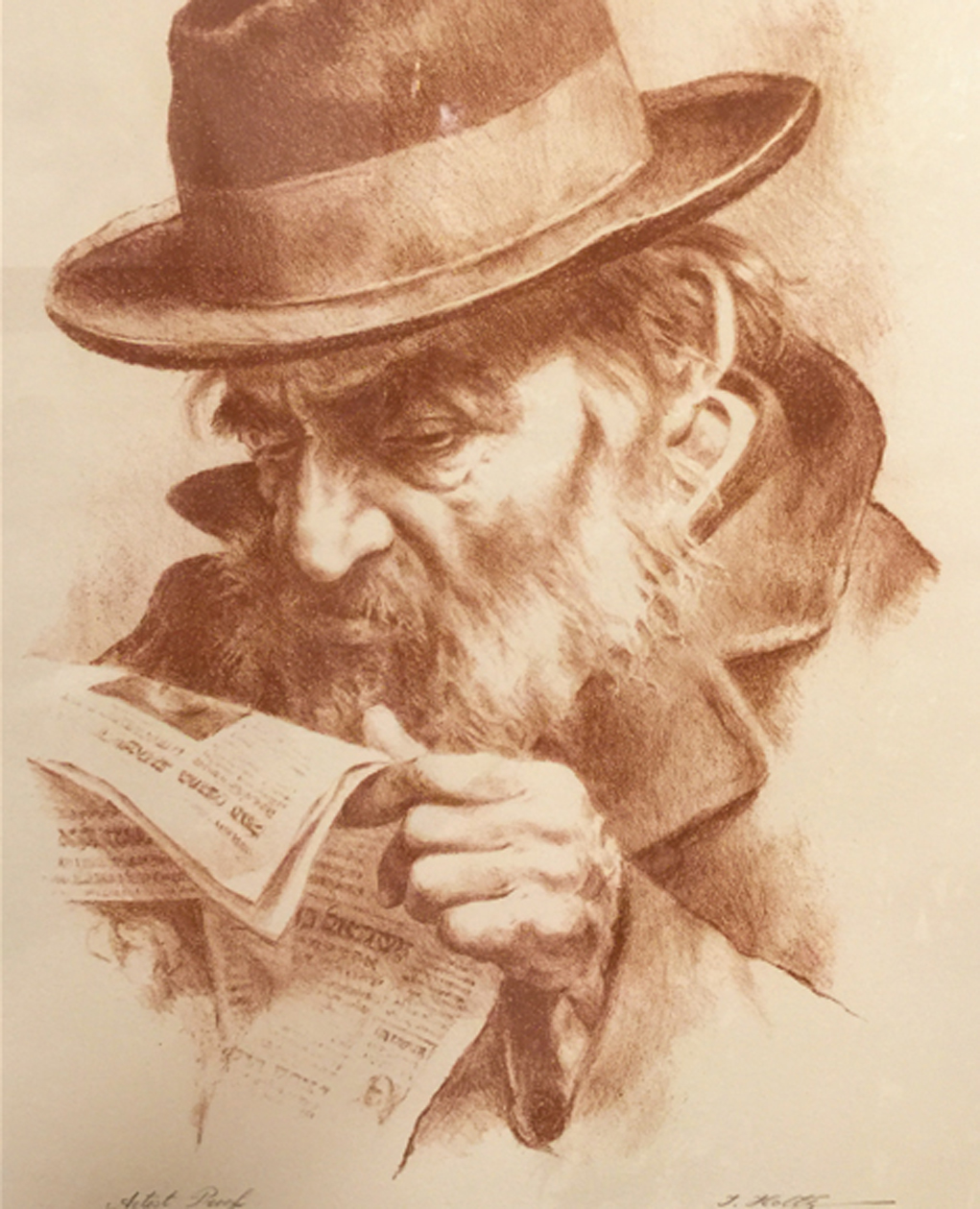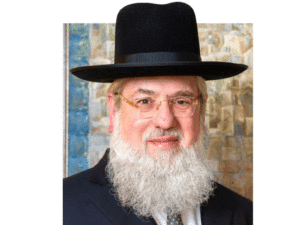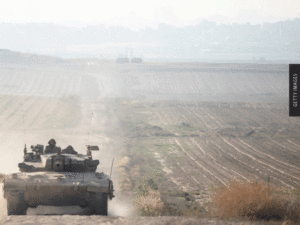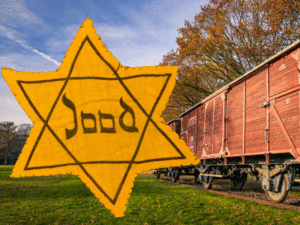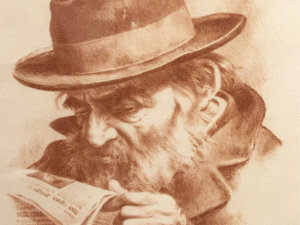Sukkos Memories
The holiday of Sukkos is different for everyone, and every person has his own individual memories of Sukkos.
I remember the Sukkos holidays of my childhood, when the baalebatim of Beer Yaakov used to visit the rov’s sukkah and I, the rov’s young son, used to peel dozens of eggs and potatoes in preparation for their visit. During the holiday, our family would visit Rav Moshe Shmuel Shapiro’s sukkah at the Beer Yaakov yeshiva, and then Rav Nissim Toledano’s sukkah at Yeshivas Sheeris Yosef. I will also never forget the one year that I spent Sukkos in America, when I was a talmid in the Yeshiva of South Fallsburg. I still pine for the yeshiva and the beautiful shiurim delivered there by Rav Elya Wachtfogel.
I am sure that every man remembers the first sukkah he built after his marriage, and the first sukkah in which he sat with his children. I will never forget the Sukkos of 5749, over 30 years ago, when Rav Shach visited Rav Ovadiah Yosef in his sukkah in Yerushalayim. It took a great deal of courage on my part to ignore the people who admonished me not to push my way into the sukkah to observe their exchange, and certainly not to photograph them. Yes, I did both of those things: I managed to enter the sukkah and watch the awe-inspiring meeting between the two great men, and I captured the images on film for posterity.
To this day, I am still moved by the photographs from that evening. One image shows Rav Shach being led by Aryeh Deri along the small path to the sidewalk outside Rav Ovadiah’s home. Another picture shows Rav Shach seated in the small sukkah between Rabbi Avrohom Ravitz and Rav Ovadiah. It was at that moment, on Chol Hamoed Sukkos, that Rav Shach wrote his famous letter in which he called upon Sephardim to vote for the Shas party, in spite of the fact that Degel HaTorah had already been founded.
No Parking Tickets on Sukkos
Every Yom Tov is a wonderful time for the Jewish people, but there is something even more unique about Sukkos. The joy of Sukkos is somehow greater than that of any other time of year. Here in Israel, it is a time when many people visit the sukkos of the gedolei Yisroel to receive their brachos, and many people take the opportunity to visit Yerushalayim. From my home near the entrance to the city, I can always observe the immense volumes of traffic congestion on the highway. Even the state itself seems to act differently on Sukkos. For instance, the Yerushalayim municipality permits the construction of sukkos on certain parts of public property, sometimes even on the streets themselves. And that is to say nothing of the parking lots that become filled with sukkos over the course of the holiday. The city does not issue parking tickets on Sukkos to people who park illegally; the inspectors are well aware that many of the standard parking spaces are already occupied by sukkos.
I don’t know how you manage to build sukkos in the more densely populated areas in America, but I assume that you find some way to achieve that. I am certain that you also have halachic solutions for carrying items from your homes to the sukkah on Shabbos. In any event, I send you my best wishes in honor of Sukkos from the holy city of Yerushalayim.
And then there is Simchas Torah. I have been waiting expectantly for this year’s Simchas Torah in the Pressburg shul since the holiday ended last year. I once quipped that there is an added element of meaning here in Israel to Chazal’s statement that Hashem declared, “Kasheh alai preidaschem—It is difficult for Me to part from you,” when He granted the holiday of Shemini Atzeres to the Jewish people. Here in Israel, married yungerleit wear the frocks from their weddings on all of the Shalosh Regalim—and when Sukkos draws to a close, the men find it difficult to part with those precious garments. Therefore, Hashem gave us one additional day to rejoice with our frocks.
And for you in chutz la’aretz, the Yom Tov was extended for two extra days.
A gut Yom Tov to all of you!
Yearning for Peace
The hubbub over the election still hasn’t abated. In the Knesset, no one is in a rush to return to business as usual; there is still concern that we might be forced into yet another round of elections.
For the chareidi community, this has been a good time in some ways. The various factions in our community made peace with each other as journalists and columnists laid down their pens. For a short time, the community was united around a common cause. All three chareidi newspapers in Israel published articles expressing the same sentiments, and there was even a joint rally for the community, with a single moderator addressing the audience from a single stage. We can only hope that the unity will become the standard fare for our community.
On the Thursday before Yom Kippur, I attended the swearing-in ceremony for the new members of the Knesset. It was a heavily attended ceremony, but it could hardly be said that there was a celebratory air to it. On the contrary, the mood was somber and dejected. I listened as Yair Lapid spoke to the members of the Blue and White party and asserted, “It is most important to me that there should be unity among the people, that there shouldn’t be another election. This country needs to enter a healing process; the wounds must be repaired.” It was the height of hypocrisy—the Cossack crying foul when he was robbed in broad daylight, the man who inflicted the wounds demanding that they be healed. Even Lieberman set a new record for hypocrisy when he warned Netanyahu and Gantz, “The nation will not forgive you if you drag them into unnecessary elections.” So said the man who was personally responsible for this most recent, utterly unnecessary election. There seems to be no limit to these politicians’ audacity!
The chareidi political leadership, on the other hand, displayed a sense of responsibility and a grasp of the gravity of the situation. At the meetings of all the other parties, the various party leaders were engaged in shameless self-aggrandizement, while the chareidi politicians spoke about the threats to all that is sacred in Yiddishkeit, to the world of Torah learning and the bnei yeshivos.
Meanwhile, the Arab MKs chose to absent themselves from the swearing-in ceremony altogether, both on account of the Arab protest in the north and because they refused to stand for Hatikvah at the end of the ceremony, much less to sing it, but they also did not want to make a show of walking out of the room before the national anthem began. Today, the Arab parties make no effort to hide their opposition to the state. We pray that Hashem will grant wisdom and resourcefulness to the leaders of the State of Israel and that He will bless us with peace.
The Victims of the Justice System
This year, the Yom Tov of Sukkos follows immediately on the heels of Prime Minister Netanyahu’s pre-indictment hearing. The handful of days when the prosecutors will seek to flay him alive will undoubtedly lead to a deluge of leaks, threats, and various forms of pressure. It is frightening to think of the power that the attorney general apparently possesses (at least, in the derech hateva): His choice may determine whether Netanyahu is completely exonerated or he will face the threat of imprisonment. I feel sympathy for both men. Based on what I have heard so far, the outcome of the hearing is likely to be in Netanyahu’s favor. Nevertheless, there is no way to be certain.
During the Aseres Yemei Teshuvah, the prosecution announced its decision to close the cases against those who were involved in the scandal concerning Mayor Miriam Feirberg of Netanya, including Rabbi Avraham Gugig, a lawyer from Netanya, and Avraham Teshuvah, a contractor from the city. The case against Feirberg herself was closed several months ago due to a lack of evidence. Exactly three years ago, this scandal exploded onto the front page of every newspaper, with flamboyant headlines announcing the “corruption affair” and referring to the alleged culprits with all sorts of viciously derogatory terms. Judge Amit Michaels of the Shalom Court extended the remand of the mayor and the businessmen, explaining that there was a “reasonable suspicion that connected all of them to the allegations.” Judge Erez Yekuel of the District Court was somewhat more cautious and less decisive in his ruling, but he still rejected the appeals against the defendants’ detentions. In retrospect, we have seen just how quick the authorities were to take these people into custody without any substantial evidence against them.
In this case, the police did their job, as did the prosecution. The latter proved that it was not swayed by the public pronouncements made against the suspects in the case in an effort to demonize them. The decision to drop the case may have come as a slap in the face to the police, who were too quick to recommend indicting the suspects. It may also serve as proof that the police should not be making recommendations at all; their job should be simply to transfer the material they amass during an investigation to the prosecution.
It should be noted that the religious community’s faith in Rabbi Avraham Gugig, a genuine tzaddik who was one of the suspects in this case, was not marred in the slightest by his arrest and the judicial process launched against him. In Netanya, Gugig is known as a proficient and highly successful attorney, as well as a paragon of chessed. He will always be remembered for his contributions to various institutions of Torah learning in the city, especially Yeshivas Radin. The yeshiva itself, along with Rabbi Gugig’s passion for Torah, was part of the legacy of his father-in-law, Rav Dovid Resnick. Rabbi Gugig’s two sons, Reb Michoel and Reb Chanoch, serve as a rosh yeshiva and rosh kollel, respectively, in the yeshiva. The yeshiva has been wildly successful; the highly qualified faculty pour all of their energies into the development of the hundreds of talmidim, and the rosh yeshiva Rav Ovadiah Broide successfully trains the bochurim in the learning methodologies of Chevron and Kfar Chassidim.
But even if their standing in Netanya hasn’t been eroded by this experience, who can repay Gugig, Teshuvah, Mrs. Feirberg, and her family members (who were also arrested) for the time that was stolen for them and for the sleepless nights they endured? Who can compensate them for the fact that their blood was callously spilled in public?
And the same can be said about Binyomin Netanyahu: If he is ultimately exonerated in the pre-indictment hearing, or at least acquitted in his trial, no one will ever be able to make amends for all the suffering that he has experienced.
An Eye on Cemeteries in the Diaspora
Hardly a day goes by when we do not hear about the desecration of a Jewish cemetery somewhere in the world, or the refurbishment of a cemetery somewhere in the Diaspora. In recent days, one headline announced, “Jewish Tombstones Vandalized in Hajdúszoboszló” (in Hungary), while another spoke of “Major Renovations in the Cemetery in the Town of Ganice” in Ukraine. Not long before that, the news reported that the kevarim of various tzaddikim in Bulgaria had been repaired, and that new tombstones had been installed at the kevarim of the Maggid of Mezeritch and the Rebbe Rav Zusha. The organization Ohalei Tzaddikim, run by Rabbi Yisroel Meir Gabbai, was responsible for both restorations. In recent years, Rabbi Yitzchok Shapiro of London has also been involved in restoring many ancient cemeteries.
Looking back a bit further into the recent past, one can find headlines announcing that the Jewish cemetery in Mantua, Italy, was in danger of being destroyed, while a battle was being waged in the courts to save the ancient Jewish cemetery of Vilna, and Ohalei Tzaddikim was in the process of restoring historic tombstones in the Jewish cemetery in Kaminka, Ukraine. Even Haaretz showed some concern for Jewish graves: In a major article that was published on a recent Friday, entitled “In the Footsteps of Vanished Jewish Graves,” the newspaper tells the story of Meir Bulka, who has been working to locate hundreds of cemeteries that have been lost.
The Jewish world certainly owes a tremendous debt of gratitude to these individuals. Here in Israel, the Ministry of Religious Affairs recently announced that an inter-ministry committee had been assembled to map out the steps that must be taken for the preservation of Jewish cemeteries in the Diaspora. This committee, which will probably have the power to allocate government funding for this purpose, is the result of the work of Moshe Arbel, a current member of the Knesset who formerly served as the chief of staff of the Interior Minister. Indeed, the State of Israel has a moral obligation to intervene on behalf of all of our ancestors, who are powerless to fight back against those who seek to disturb their eternal rest.
Turning a Blind Eye to Hunger
Sukkos is perhaps the best time of year for us to empathize with the plight of the needy members of our society, those who are often described as the “transparent” citizens. On Sukkos, we all move into temporary dwelling places, which gives us a better sense of proportion. We remember that everything in our lives is temporary, that we are all dependent on Hashem’s kindness and we live by His grace.
A recent headline reported that 23 percent of Israel’s elderly population find it difficult to keep up with their basic monthly living expenses. An 80-year-old resident of the south informed Maariv that her menu on Yom Tov consisted solely of salad. On Rosh Hashanah, we daven to be “the heads and not the tails.” In Israeli society, there are certainly people who have been consigned to the status of “tails.”
Another article in the same newspaper was titled, “The Stories of Poor Families on Rosh Hashanah.” The article quotes two mothers bemoaning their financial situations and praising the chessed organization Chasdei Naomi for coming to their aid. Such is the reality of poverty in Israel today: The government turns its back on the needy citizens of the state, and only the chareidi charitable organizations assist them.
Another newspaper announced that the “social gaps” had been exposed, and that the residents of the periphery of the country tend to be poorer and less healthy. It also quoted the interesting statistic, which bears further examination, that the number of fatalities in traffic accidents on the periphery is more than double the number in the center of the country. Does that result from a lack of proper infrastructure on the country’s periphery? Certainly, there is no connection between poverty and reckless driving. On the other hand, the statistic may include the many Arab youths who drive wildly, without heed for the rules of safety.
What is perhaps most interesting about this article is that it appears on page 25 of the newspaper, followed only by the obituaries and the sports section. Apparently, it was not deemed important enough for a more prominent placement in the paper.
Blood on Their Hands
I have mentioned in the past that Arab terrorists seek to cause bloodshed specifically during Yomim Tovim, in order to disrupt the festive atmosphere that we enjoy on our holidays. At this time of year, the Shin Bet has its hands full. They utilize Arab collaborators, who provide them with information either out of fear or in exchange for benefits, and during this time of year the informants are pressured to be even more alert than usual and to report on any signs of impending danger. After the Yomim Tovim, the Shin Bet generally reports the number of terror attacks that have been thwarted.
Last week, a Molotov cocktail was thrown at a car on Route 443. You certainly haven’t read about this, for a simple reason: It wasn’t reported in the news. The Israeli authorities do not want anyone to be aware of it. There was also an attempted stabbing attack at the Shilat Junction (near Modiin Illit); this one, however, was reported. There is a limit to the degree to which the media will censor themselves; however, they endeavor not to sow panic by reporting on too many acts of terror. In this particular attack, a 22-year-old Israeli woman was left in moderate condition after being attacked by a 14-year-old Palestinian stabber. A group of Border Guard officers who were driving past the site of the attack noticed the terrorist as he was attempting to flee. They pursued him on foot, shot in the air several times, and managed to apprehend him after he had run a few hundred meters.
The message is clear: Every road can be dangerous, and terror can be anywhere. Route 443 is a highway in the center of the country, yet it has also been plagued by would-be murderers.
Yet another incident took place near the Chain Gate in the Old city of Yerushalayim, where a terrorist attempted to stab police officers who were stationed at the entrance to Har Habayis. The officers fought with him and managed to overcome him and arrest him. A policewoman was wounded in her hand during the struggle.
Another stabbing attack, in which the perpetrator was also 14 years old, was thwarted in Meoras Hamachpeilah. In this case, the would-be stabber was apprehended with a large knife in a bag, and he admitted under questioning that he had planned to carry out an attack.
On erev Shabbos Shuvah, a soldier was wounded when an explosive device was detonated at a checkpoint in Gush Etzion (near the village of Beit Omer). Another bomb exploded, apparently by mistake, before it could cause harm. And there were many other “minor” incidents that have not been reported, including dozens of attempted attacks, with rocks and Molotov cocktails, on Israeli cars on the roads of Yehuda and the Shomron on erev Rosh Hashanah and erev Yom Kippur. These incidents are not reported because they have become routine, although the weapons that have been used have even caused deaths in the past when they were thrown at moving vehicles.
Evil in Our Land
The latest darling of human rights organizations is Samer Arbid, who appears to have been the leader of the terror cell that perpetrated the murderous attack at the Ein Dani spring near the settlement of Dolev (and near Kiryat Sefer) on August 23. The attack claimed the life of 17-year-old Rina Shnerb and gravely wounded her brother Dvir, who has since been released from the hospital. Rabbi Eitan Shnerb, the father of Rina and Dvir, who was also wounded in the attack, has generated a good deal of kiddush Hashem since the devastating tragedy.
The leader of the terror cell was captured, and it seems that while he was being interrogated by the Shin Bet, he was beaten severely and has since been hospitalized in critical condition. Naturally, Haaretz has demanded a full investigation, and the Ministry of Justice has promised to investigate the matter.
Meanwhile, I was reminded of an exchange that I had with one of the Arab members of the Knesset in the Knesset lounge. I happened to be present in the smoking corner of the lounge one day along with two MKs: Yigal Guetta of the Shas party and Esawi Frij of Meretz. The two were smoking cigarettes and chatting about various topics, and at a certain point, I turned to the member of the Shas party and said, “Yigal, why are you joking around with this man? If you died in a terror attack, chas v’sholom, he would drink a l’chayim!”
MK Yigal Guetta was shocked by my comment. His companion, Esawi Frij, had been distracted for a moment and hadn’t heard me, and he asked me to repeat my comment.
“I said that if Yigal died in a terror attack, you would drink a toast,” I informed him.
The Arab MK trembled. “How can you say that?” he demanded. “You are insane! Do you really think that I would drink a toast if something happened to Yigal?”
“Your people always do that, after every terror attack,” I replied. “You dance on the rooftops and hand out candies. Even if you wouldn’t celebrate if Guetta himself were harmed, that doesn’t change the situation.”
Frij rose to his feet and screamed, “You will never enter this building again! I am going to file a complaint against you! Who do you think you are?”
Since that day, he hasn’t exchanged a single word with me. And he has not returned for the 22nd Knesset. At the swearing-in ceremony, the supposedly festive occasion that no one actually celebrated, I did not see him at all.
Touching the Kosel
The Rishon Letzion, Rav Yitzchok Yosef, wrote in a recent kuntres excerpted from Yalkut Yosef that it is permissible for mispallelim at the Kosel to place their hands in the cracks between the wall’s stones. He acknowledged that there are certain authorities who prohibit this: “When the Brisker Rov was told that people were placing their hands between the stones of the Kosel, he trembled and asserted that it is forbidden as a partial entry [into the Bais Hamikdosh]. The Aderet agreed to this and wrote that anyone who fears the Word of Hashem should take care not to insert even a single finger between the stones of the Kosel, lest he violate a prohibition in the Torah. See the sefer Hamaaseh V’HaTerumah, which cites several gedolim who ruled that one should be stringent about this matter. See also Mikdash Melech…. The Chazon Ish and Rav Yaakov Yisroel Kanievsky also ruled stringently about this, and the sefer Ir Hakodesh V’Hamikdash is also inclined to be machmir…. The Beer Yitzchak ruled that it is prohibited even after one has immersed in a mikveh and waited until after sunset…. Some suggest that it may be prohibited even to touch the Kosel Hamaaravi.” After all this, he adds, “The sefer Ir Hakodesh V’Hamikdash permits touching the Kosel Hamaaravi, and many poskim permit not only touching it, but even placing one’s hand in the holes in the wall.”
After reading this, I wrote to the Rishon Letzion and commented, “I was surprised that after quoting many gedolim, including the Brisker Rov and the Chazon Ish, who prohibit placing one’s hand in the cracks of the Kosel, the rov wrote only that many other poskim permit it, without going into detail. I would also be curious to know the position of the rov’s father, the Yabia Omer, on this subject.” I was surprised when, just a few days later, I received a relatively long and extremely clear response. “In the kuntres, I did not go into detail, since I wanted it to be suitable for all audiences,” he explained. “Nevertheless, in the Yalkut Yosef itself, I cited a large number of poskim who permit this.” He proceeded to enumerate a long list of poskim, including the Ir Hakodesh V’Hamikdash, the Avnei Nezer, the Lubliner Rov, the Toras Chessed, the Har Hakodesh, Rav Yehoshua Leib Diskin, the Abir Yaakov, Shailos U’Teshuvos Machshavos B’Eitzah, and Rav Akiva Yosef Schlesinger. He added that it has also been reported that the Ohr Hachaim instructed a talmid to place a note in the Kosel, and that the same has been said about the Minchas Elazar.
Then he added, “The Har Hakodesh (sec. 264) states that Rav Avrohom Yaakov Zelaznik told him that after he examined the sugya, it became clear to him that it is permitted, and that Rav Shlomo Zalman Auerbach had made the same statement. See Shu”T Minchas Shlomo vol. 3, sec. 160, p. 240.”
Finally, he concluded by quoting his father, Rav Ovadiah Yosef: “My father also ruled that it is permissible for mispallelim at the Kosel to place their hands into the cracks between the stones of the wall, since the Kosel is merely the wall of Har Habayis, unlike the opinion of Radvaz.”
So it was that I troubled the chief rabbi with my inquiry and received a comprehensive teshuvah in return, which demonstrated his vast store of knowledge and enormous halachic prowess, and assured me that there are indeed a plethora of poskim who share his opinion on this matter, which was also shared by his father.
The Brisker Rov Looks for a Mirror
On erev Yom Kippur, we marked the sixtieth yahrtzeit of the Brisker Rov. In honor of the occasion, here is a story about the Brisker Rov that I heard from Rav Moshe Shmuel Shapiro, his renowned talmid.
Rav Shapiro once related that the Brisker Rov had told him the following story: “I was once staying in the resort town of Krinitza, and while I was putting on my tefillin, I began looking for a mirror to check if the tefillin shel rosh were in the correct place. A chassidish Yid observed this and decided to admonish me about it; he told me that the sefer Divrei Chaim states explicitly that it is forbidden for a man to look in a mirror even to check the positioning of his tefillin. I replied that this statement does not appear in the Divrei Chaim. He insisted that he was correct, and I suggested that he should bring the sefer and we could look at it. He brought me a copy of the Divrei Chaim, which states that the practice is a minhag shtus, but does not rule that it is forbidden…. Indeed, I had been aware that the Divrei Chaim considered it a minhag shtus but that he does not prohibit it. And I would prefer to be called a shoteh throughout my life rather than becoming a rosha and being counted among the sinners of Bnei Yisroel who have never worn tefillin properly.”
Chag sameach, shanah tovah, and piska tava to all of you!
